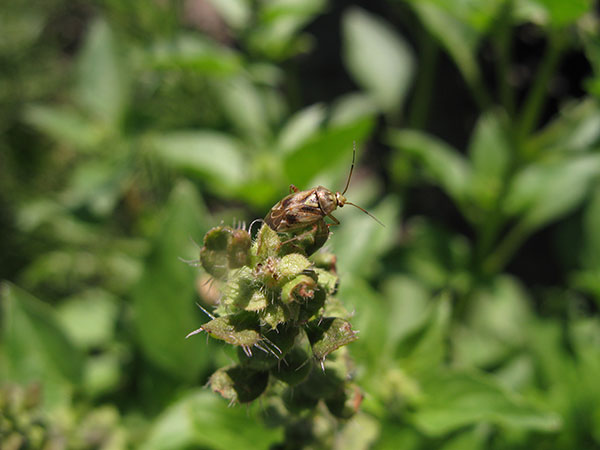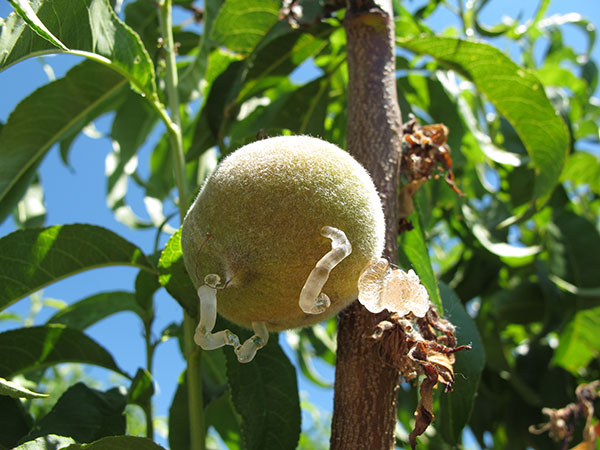Tarnished Plant or Lygus Bug on Fruit
HOSTS
- Apricot
- Nectarine
- Peach
- Many Broadleaf Crops
- Weeds and Native Plants
DESCRIPTION
Lygus bug (also known as tarnished plant bug) occurs on a wide range of crops. This bug damages crops by feeding on developing flower buds, fruit and seeds. Lygus bugs are most often a problem in fruit orchards with ground cover comprised of broadleaf weeds, or in orchards near alfalfa fields or other host plants.
Lygus bugs primarily injure fruit early in the season, from pre-bloom through early fruit development. Therefore, control actions are typically targeted for this time. There are three to four overlapping generations each year.
BIOLOGY
Adults are 1/4 inch long, pale green to brown with yellow, black, and reddish markings. Their characteristic feature is and upside-down triangle on the upper center of the back.
Eggs and 1/25 inch long, creamy white, and flask shaped. They are inserted into leaves or stems of plants about to flower.
Nymphs are smaller than the adult, pale green, and have no wings.
SYMPTOMS
- Raised and sunken corky areas on the surface of stone fruits
- Stings with gummy ooze on stone fruits.
- Shriveled and dead flower buds that haven't opened on pome fruits, some exuding a small drop of gummy liquid
- Cresent-shaped pustules, deep pits, and irregular impressions on pome fruits
GENERAL MANAGEMENT
Lygus bugs use plant hosts in addition to fruit trees for feeding, reproduction, and overwintering. Most potential problems can be reduced by appropriately managing or removing the alternate hosts.
Insecticides:
Insecticides can provide quick and effective control of piercing-sucking bug pests when their use is targeted for substantial populations at a susceptible stage of fruit development. However, repeated insecticide applications have been shown to quickly create resistance and will dramatically reduce natural enemies. Therefore, insecticides should not be used unless necessary to prevent substantial fruit damage.
When problems are detected, spot or border treatments are preferable to entire orchard sprays. Treatment can provide rapid knock-down of fruit-damaging populations, but reinfestation can occur as long as large numbers of the bugs are actively moving into orchards to feed or seek sheltered overwintering sites.
Biological Control:
A number of naturally occurring parasitoids and predators attack lygus bugs:
- Several parasitic wasps attack eggs, nymphs, and adults.
- Predators such as big-eyed bugs, damsel bugs, assassin bugs, some beetles, and crab spiders can help control lygus bug nymphs on host plants outside the orchard or on the ground cover.




